Section II - Performance Tests
Synthetics
In this section of testing we cover the synthetics. These are tests that run a scripted sequence of internal APIs or that use another installed application to perform a series of scripted events. They are great in that they can provide reproducible results across various platforms. On the down side, synthetic tests can be fooled with driver tweaks and optimizations. In some cases it is necessary to rename the .exe file to something generic to discover if this is the case. In any event when this is needed (when a test shows a drastic difference in performance over the renamed exe) we will note this and show both results for comparison.
PCMark7 -
PCMark7 is the latest general performance test from FutureMark. As each generation of this benchmark has evolved and developed we have watched them add more and more realistic tests to this suite. With this generation we find more media tests, (audio and video transcoding) moving of large files, multiple web page rendering, and much more (the even added DX10 gaming). We use the Overall Performance and Common Usage suites in our testing.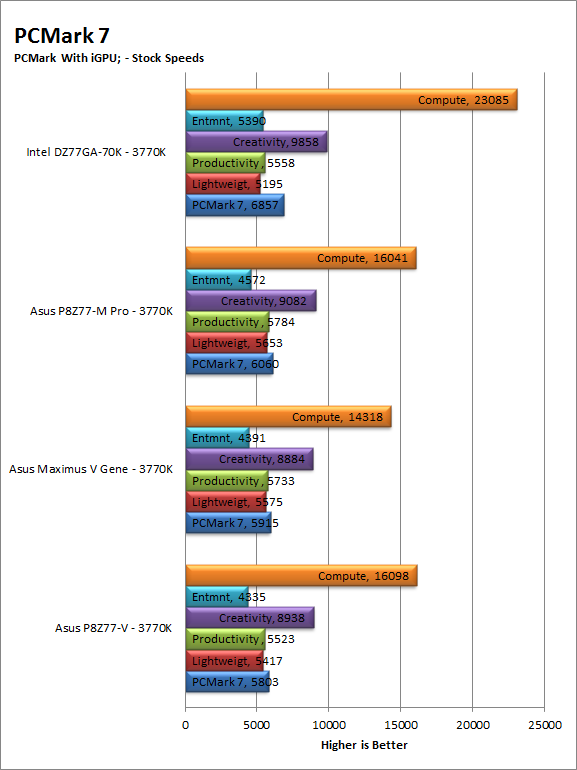

Under PCMark 7 the P8Z77-V does fairly well for its place in the market. We do see a little bit of the memory performance showing up under the CPU only testing especially during stock runs. When the P8Z77-V is overclocked or has the HD5870 in the system the numbers stabilize and look much better. In practical terms this means that something is slowing the system when it has to rely on the iGPU for graphics at stock speeds. We are not overly worried though as we know that Asus will be sure to have a new BIOS out to correct the issue. 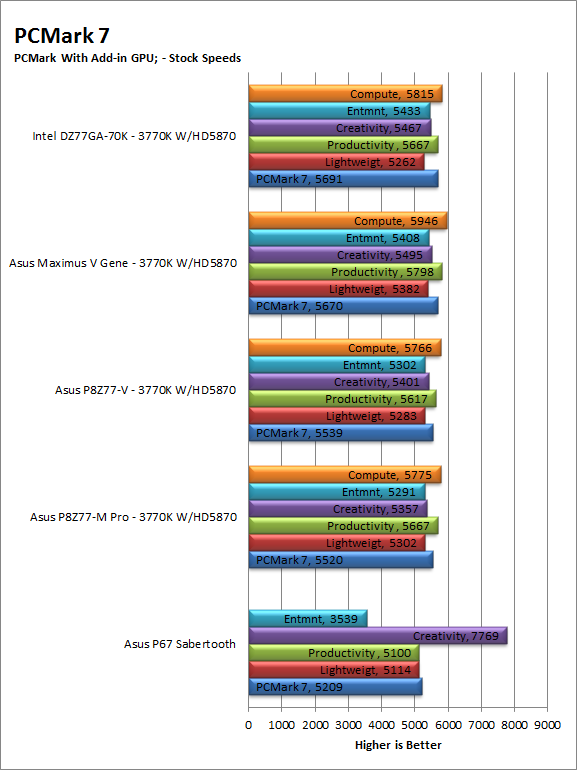
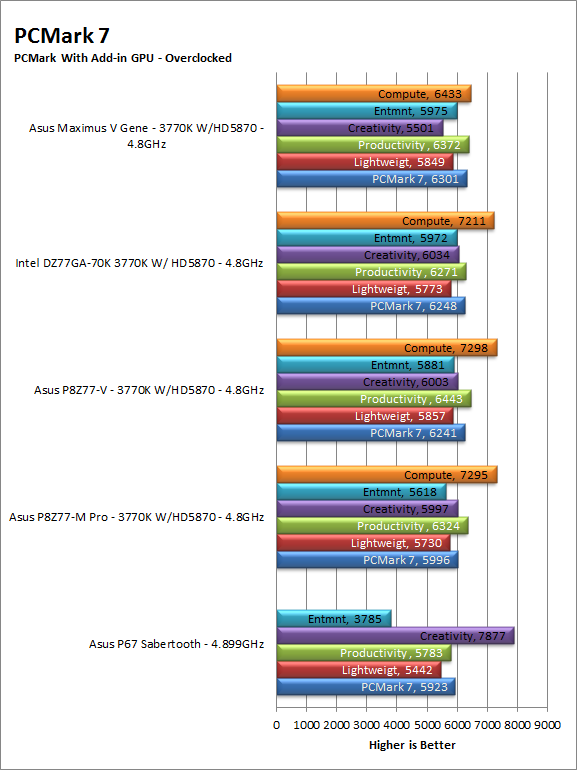
3DMark 11 -
3DMark 11 is the other Futuremark test that we run on our motherboards. This test simulates the typical tasks that a GPU (and system) would have to perform to provide you with a good gaming experience. It is based on the DX9, DX10 and DX11 engines but can only be installed on Windows Vista or later. The suite of tests covers DX9, DX10, and of course DX11 rendering; it also covers AI computations and physics. That’s right I said Physics the latest version of 3DMark uses a Havok physics engine. This removes the advantage that nVidia had with 3DMark Vantage.
| 3DMark 11 iGPU | 3DMark 11 iGPU - Overclock |
 |
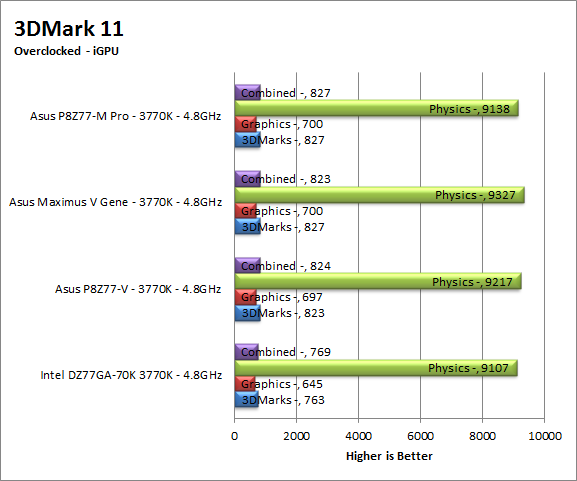 |
With the GMA 4000 as the primary display adapter the P8Z77-V falls into line just above Intel’s DZ77GA-70K. It is also not too far behind the Maximus V Gene either so in general you can probably expect pretty much the same gaming experience from all four of these boards when using the iGPU.
| 3DMark 11 HD5870 | 3DMark 11 HD5870 - Overclock |
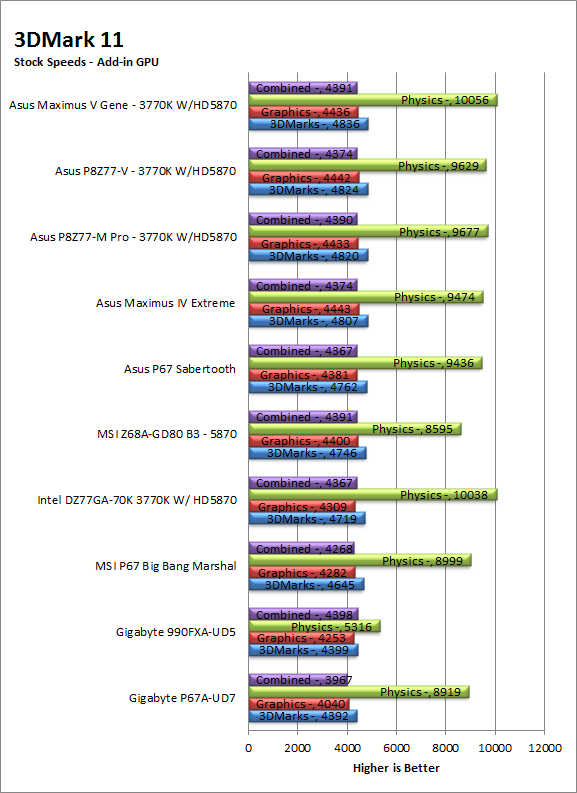 |
 |
Now with our HD 5870 V2 from Asus we find the numbers look a little different. Here, and at stock speeds, the P8Z77-V is right behind the Maximus V Gene and in third place when we overclocked the board to 4.8GHz. This could be a good indicator of gaming performance.
HyperPi 0.99b -
HyperPi is a front end application that allows you to easily run multiple instances of the SuperPi application. SuperPi, for those that are not familiar with it, is an application that measures the time it takes to calculate the number Pi out to as many as 32 million places. This calculation is then checked and run multiple times (up to 24 for a 32M run). This test stresses the CPU, Memory and HDD as data is handed off between the three. If there is a weak link, HyperPi will show it. For our testing we run the 32M test on as many cores (and threads) as the CPU has available. The slowest CPU time is then recorded. 
Here is something interesting; although the P8Z77-V showed us memory bandwidth that was not where other Z77 boards are (in terms of RAW bandwidth) we see it do quite well in our HyperPi testing. Typically when we see that type of memory issue the boards do not do well here unless they have exceptional HDD performance and while the P8Z77-V has good HDD performance it was not really enough to get the times we are seeing here. Still this is a good thing for anyone that will be using the P8Z77-V for complex computations (including transcoding). 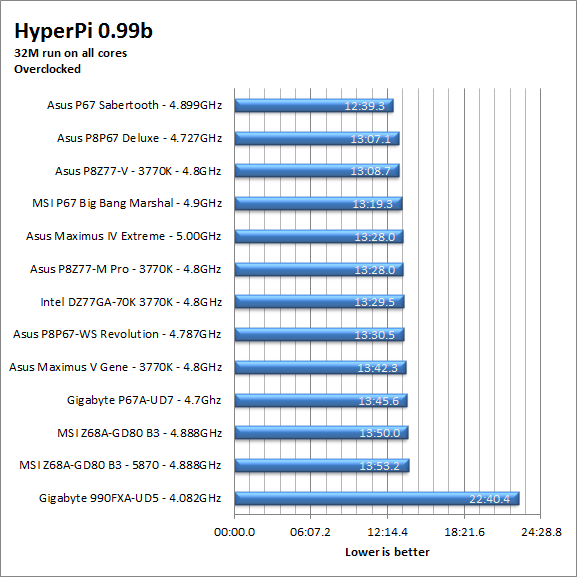
Cinebench R11.5 -
Cinebench R11.5 is the 11th release of Maxon’s rendering test. This test is based off of the Cinema 4D engine, which is one of the industry standard tools for digital animation. It is a powerful product with many different modules that can be “plugged” into it to increase its effectiveness. With Cinebench you get to see how your computer would do using this application. There are two tests; one tests the CPU’s ability to render an image across multiple cores or threads. The other tests your systems ability to handle OpenGL based rendering.
| Cinebench R11.5 CPU Render | Cinebench R11.5 CPU Render Overclock |
 |
 |
The P8Z77-V looks like it is up to the stress that Cinebench puts it through. This should be good news for anyone that wants to use some of the more complex image manipulation programs out there. These often require your system to render the image in a similar way.
| Cinebench R11.5 OpenGL | Cinebench OpenGL Overclock |
 |
 |
For OpenGL rendering using only the GMA 4000, well this is not meant as a professional grade GPU so we are not surprised to see the numbers where they are for all of the Z77 boards.

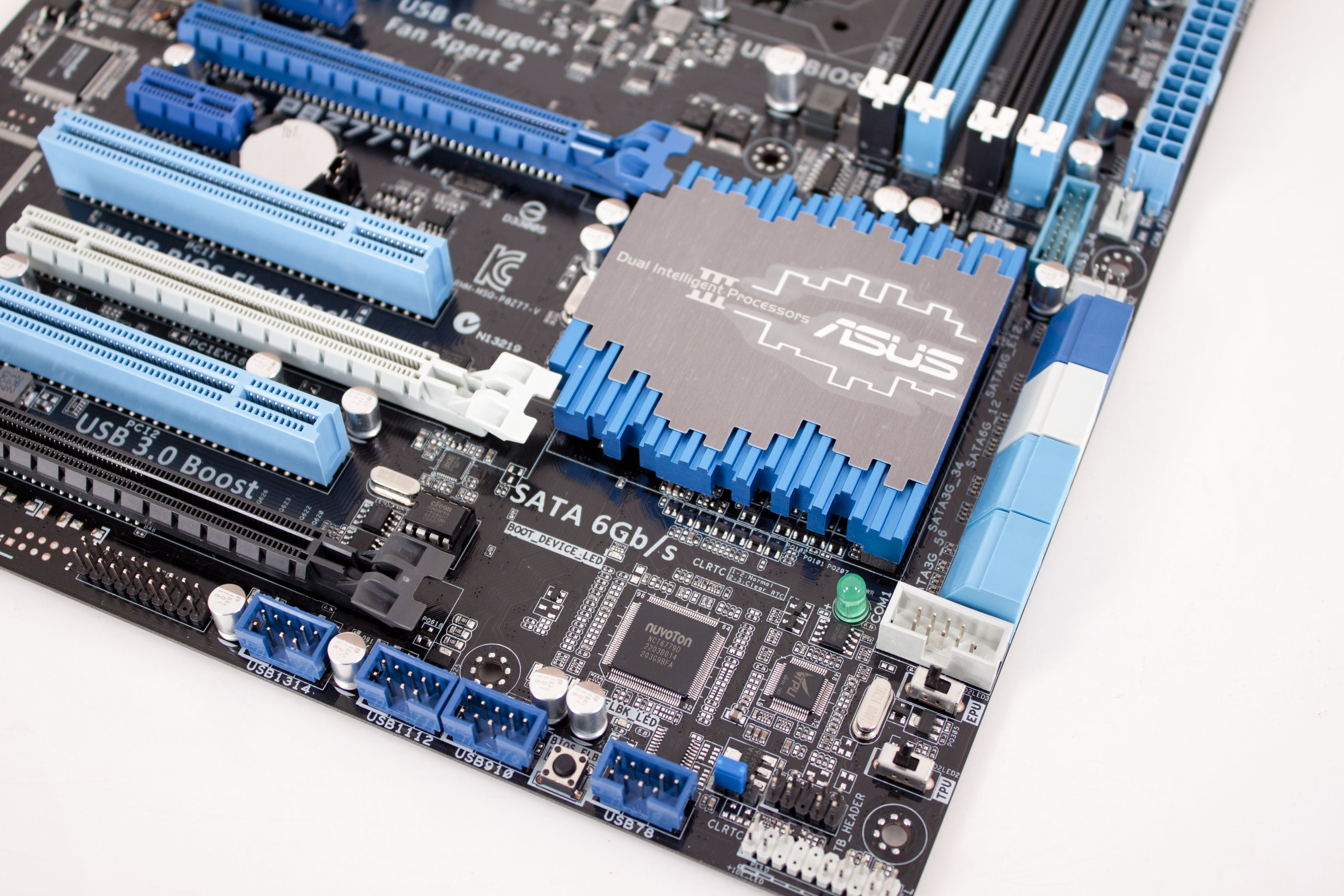 So now that we have covered all of the
So now that we have covered all of the 

